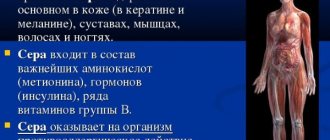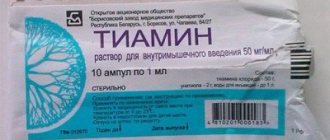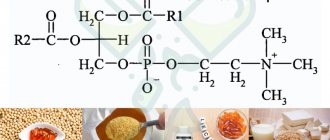May 10, 2022
Astaxanthin is a natural pigment called xanthophyll that belongs to a group of chemicals called carotenoids. In nature, it is produced by both plants and animals. It is thanks to astaxanthin that some algae and arctic lichens, the meat of fish from the salmon family and marine crustaceans (lobsters, shrimp, etc.) are colored red or pink.
Astaxanthin has been shown to have high antioxidant activity, far superior to tocopherol or beta-carotene. Thanks to such impressive indicators, this substance has found wide use in many pathological conditions.
Astaxanthin is taken orally for Alzheimer's disease, Parkinson's disease, stroke, high cholesterol, liver disease, age-related macular degeneration (age-related vision loss); it is also prescribed for the prevention of cancer. It is also used for metabolic syndrome, a combination of symptoms that increases the risk of heart disease, stroke and diabetes. It is also used to improve exercise performance by reducing microtrauma and muscle soreness after exercise. In addition to all of the above, astaxanthin is used to prevent sunburn, insomnia, as well as carpal tunnel syndrome, rheumatoid arthritis, dyspepsia, male infertility and menopausal symptoms in women.
As for external use, astaxanthin is applied to the skin to protect against sunburn, to combat the signs of premature aging and for other cosmetic purposes.
In the gastronomic industry, it is used as a coloring agent for salmon, crab, shrimp and chicken. In agriculture, astaxanthin is a food additive for chicken eggs.
Benefits for the body
Astaxanthin has 2 additional oxygen atoms on each of its six-membered rings. Scientists have proven that this substance:
- prevents the destruction of cell biomembranes;
- slows down aging;
- prevents the development of cancer;
- optimizes energy metabolism and recovery processes;
- moisturizes the skin, makes wrinkles less pronounced, and tightens the oval of the face;
- accelerates growth, improves hair appearance;
- increases sperm motility and their ability to fertilize an egg, therefore it is used in the treatment of male infertility.
Astaxanthin also weakens the course of chronic diseases and reduces the number of exacerbations. It has also been proven that this substance improves the cognitive functions of the brain and can have a positive effect on patients with Alzheimer's and Parkinson's diseases.
Now Foods, Astaxanthin, 4 mg, 60 Veggie Caps
★★★★★
561 rub.
More details
The use of vitamins with antioxidant effects in complex therapy of diabetes mellitus
Diabetes mellitus (DM) is a medical and social problem, as it leads to early disability and high mortality, which is caused by vascular complications of DM: micro- and macroangiopathies. Microangiopathy is a diffuse process of damage to small vessels (capillaries, arterioles and venules), developing with diabetes in all tissues and organs of the body with predominant damage to the vessels of the retina and renal tissue, leading to retinopathy and nephropathy. Macroangiopathy is a lesion of medium and large vessels, leading to myocardial infarction (MI), stroke and gangrene of the lower extremities. Late complications of diabetes include neuropathies that arise as a result of primary damage to the vessels involved in the blood supply to the peripheral parts of the nervous system.
The main factor initiating the development of vascular complications of diabetes is hyperglycemia and impaired carbohydrate metabolism, associated with impaired lipid metabolism and oxidative stress.
An increased risk of development and progression of microangiopathy and atherosclerosis (AT) in diabetes is combined with pathologies such as hyperinsulinemia, hyperglycemia, arterial hypertension, disorders of the blood coagulation system, as well as disorders of lipid metabolism and oxidative stress. Hyperlipidemia is accompanied by an increase in serum levels of total cholesterol, low-density lipoproteins (LDL), triglycerides (TG) and a decrease in high-density lipoproteins (HDL). At the same time, significant changes in the activity of antioxidant enzymes and an increase in lipid peroxidation occur.
The pathogenesis of angiopathy is multifactorial. Two main factors are involved in the pathogenesis of angiopathy: internal and external. Internal includes genetic predisposition. To implement external factors, hyperglycemia and the associated cascade of metabolic, hormonal, rheological and other disorders, including end products of glycosylation, are necessary. The latter are a consequence of increased glucose metabolism and increased glucose autoxidation, leading to increased oxidative stress, increased levels of free radicals and decreased activity of antioxidant enzymes (AOD). Under normal conditions, the level of lipid peroxidation (LPO) and the activity of AOP enzymes are in equilibrium.
Oxygen free radicals are involved in the pathogenesis of almost a hundred diseases, including diabetes and its vascular complications.
The use of antioxidant therapy for diabetes is pathogenetic, since the importance of free radicals in its pathogenesis is high. Modern antioxidant therapy is represented by various drugs (preparations of α-lipoic acid, α-tocopherol, vitamin C, selenium, etc.).
The mechanism and severity of the antioxidant action of various compounds depend on the environment or structure in which they realize their antioxidant effect. Thus, vitamin C has the greatest solubility in polar solvents and realizes its antioxidant effect in plasma, intercellular fluid and at the extracellular level. Some researchers consider it to be one of the first line of defense against “aggressive” reactive compounds with high oxidative activity. The plasma layer of the cell membrane, consisting of phospholipids, can be “protected” from reactive oxygen species by compounds of the second line of defense, which include fat-soluble antioxidants - vitamins E and A. As for the protection of intracellular structures, it should be carried out by compounds that can dissolve as in water and in fats, since they must first penetrate the cell membrane and only then dissolve in the cytosol. These substances include α-lipoic acid, which is considered to represent the third line of antioxidant defense. As noted above, thioctic acid is present in all three environments: extracellular fluid, membrane and cytosol of the cell. Moreover, the synthesis of compounds with antioxidant properties can be carried out not only inside cells, but also in mitochondria, and the antioxidant defense system is represented by several dozen compounds, which, depending on their quantity, can have not only antioxidant, but also pro-oxidant properties.
Vitamin C, or ascorbic acid, includes two fractions: ascorbic acid itself (C1) and petaoxyflavin (C2), and to eliminate vitamin C deficiency, the presence of these two fractions is necessary. When vitamin C enters the gastrointestinal tract (GIT) - vitamin C is not synthesized in the human body - up to 90% of it is absorbed in the distal small intestine. In patients with diabetes, an increased need for vitamin C is detected due to its use in reactions aimed at eliminating excess free radicals, which is accompanied by a decrease in its level in the blood plasma. Vitamin C has been found to play an active role in several processes, including protection against infection, boosting immunity, and wound healing. In addition, it is necessary for tissue growth, repair and new formation of blood vessels.
Vitamin C reduces the rate of cataract formation and oxidative processes in the lens in patients with diabetes. Oxidative stress correlates with decreased insulin secretion, and vitamin C therapy interrupts the damaging effects of free radicals. Vitamin C in the form of ascorbate ions is one of the active elements of the antioxidant defense system, protecting lipids from their peroxidation. The antioxidant effect of ascorbate occurs when there is sufficient supply of other antioxidants, such as α-tocopherol and glutathione. Glutathione deficiency reduces the content of ascorbic acid in tissues and at the same time increases the concentration of dehydroascorbic acid.
However, with excess ascorbic acid (and especially its oxidizable metabolites, such as dehydroascorbate and monodehydroascorbate), pro-oxidant effects may prevail. It should be noted that a lack of α-tocopherol and glutathione may enhance the pro-oxidant effect of ascorbate and its metabolites. Therefore, the pro-oxidant effect of vitamin C can be observed not only with a lack of α-tocopherol and glutathione, but also with the use of high doses of ascorbic acid. Taking this into account, high doses of vitamin C for parenteral administration can be recommended only under severe stress (stress during surgery or immediately after its completion). The pro-oxidant effects of vitamin C can be avoided by taking vitamin C orally from foods or taking it as a dietary supplement. Vitamin C improves the absorption of iron from the intestines with a full diet, rather than with a single meal, which may contain iron absorption inhibitors. Transport of vitamin C into cells is carried out using two specific sodium-dependent ascorbate transporters SVCT1 and SVCT2, and into cells of dehydroascorbic acid - using glucose transporters GLUT-1, GLUT-3 and GLUT-4. The SVCT1 transporter gene is expressed in the small intestinal epithelium, kidney and liver, whereas the SVCT2 transporter gene is expressed in most other tissues, including bone, neurons and endocrine glands.
Vitamin E is a fat-soluble vitamin. Contained in soybeans, corn, sunflower seeds, various cereals, and nuts. The vitamin E family is represented by 8 tocopherols. Biologically, a-tocopherol is the most active; its high content is detected in the liver, adipose tissue and kidneys. The daily requirement for vitamin E is 4–5 mg. Vitamin E is one of the most potent natural antioxidants and is the “first line of defense” of cell membrane phospholipids.
At the same time, only reduced forms of vitamin E are involved in the inhibition of LPO, and ascorbic acid is the reducer of the antioxidant properties of tocopherol. Vitamin E prevents the formation of end products of LDL and stabilizes the plasma membranes of cells.
Vitamin E and its other forms enter the gastrointestinal tract along with fats, where they are incorporated into chylomicrons, which enter the lymphatic vessels and then the liver. The content of vitamin E in the blood circulation is regulated by the hepatic cytosolic α-tocopherol transfer protein (α-TTP), which selectively complexes with this vitamin, while other tocopherols and tocotrienols have much lower affinity for α-TTP.
Thioctic (or a-lipoic acid) is present as a cofactor in multienzyme complexes that catalyze the oxidative decarboxylation of pyruvate, α-ketoglutarate and other branched α-keto acids. There is sufficient evidence that α-lipoic acid can be synthesized in mitochondria from octanoic acid and sulfur-containing compounds. The thioctic acid molecule contains a dithiolane ring in an oxidized form, which provides the formation of dihydrolipoic acid, which promotes the transformation of vitamin E into a reduced form. This explains the ability of lipoic acid to prevent the development of symptoms of vitamin C and E deficiency. Lipoic acid and its dosage form thioctacid (Thioctacid rapid release (RT)) are powerful antioxidants, and the reduced form of lipoate has a more pronounced antioxidant effect compared to its oxidized form.
The main form of lipoic acid that interacts with free radicals is dihydrolipoic acid. Thioctic acid is absolutely necessary for the normal functioning of the ascorbate and vitamin E cycle in the body.
As already noted, vitamin and mineral deficiencies are common in patients with diabetes. The need to follow an appropriate diet leads to a decrease in the intake of vitamins and minerals from food, disruption of their absorption and metabolism. At the same time, the need for them in diabetes not only does not decrease, but, on the contrary, increases. This primarily applies to vitamin B1, which plays a critical role in the metabolism of carbohydrates in nervous tissue, the microelements zinc and chromium, necessary for the formation of the active form of insulin, as well as antioxidants that prevent oxidative damage to cell membranes, which increases in diabetes.
In a comparative study, clinical improvement was proven with the administration of 50 mg of a 5% thiamine solution to patients with diabetic foot. The effect of the tablet form of thiamine was comparable to parenteral administration of the drug, and the duration of the clinical result was longer. A dose of vitamin B1 of 10 mg or more is considered pharmacologically active. It has been shown that the neuroprotective effect of thiamine is observed at a dose of 2.5–5 mg/day. A number of studies in patients suffering from diabetes have shown a reduction in the risk of developing trophic foot ulcers and an increase in the quality of life when taking vitamin B1 both as a single drug and as part of multivitamin complexes. However, the minimum dose of thiamine in studies was 4 mg. Complex therapy for patients suffering from diabetes has traditionally included preparations of the B vitamin group. Until recently, water-soluble forms of B vitamins were used for this purpose: B1 (thiamine chloride), B6 (pyridoxine hydrochloride), B12 (cyanocobalamin). The disadvantage of these drugs is their low ability to pass through the blood-brain barrier and, as a consequence, low bioavailability when administered orally (1.5%).
This is due to several factors. First, after consumption, thiamine is destroyed by the enzyme thiaminase. Secondly, its absorption in the intestine is carried out using a sodium-dependent mechanism, and further absorption is carried out by passive diffusion, the efficiency of which is an order of magnitude lower compared to the energy-dependent (sodium-dependent) mechanism. In recent years, preparations of a fat-soluble form of thiamine have been developed (Benfogamma 150 and Milgamma compositum). The bioavailability of benfotiamine differs from thiamine in that all benfotiamine entering the gastrointestinal tract quickly penetrates the intestinal epithelial cells, where it is partially phosphorylated, enters the central circulation, and then penetrates into the cell, where it is converted into thiamine pyrophosphate, which is an active metabolite of various thiamine derivatives. It has been shown that the biological activity of 40 mg of benfotiamine is higher than 100 mg of thiamine mononitrite. The bioavailability of benfotiamine is 4–10 times higher than that of thiamine. It has been shown that when benfotiamine is prescribed, its maximum concentration in the blood is 6–7 times higher than when taking an equivalent dose of water-soluble thiamine, and its high concentration in the blood is maintained much longer. Thus, taking benfotiamine ensures better accumulation of thiamine in cells, which is accompanied by its higher efficiency. Fat-soluble benfotiamine has significantly better pharmacokinetic properties compared to water-soluble thiamine preparations, which is accompanied by better therapeutic efficacy.
Currently, the drugs Benfogamma 150 (150 mg benfotiamine) and Milgamma compositum (100 mg benfotiamine and 100 mg vitamin B6) are produced for oral administration. For intramuscular administration, the drug Milgamma N is available (2 ml ampoule: 100 mg of thiamine, 100 mg of vitamin B6 and 1000 mg of vitamin B12). Unlike benfotiamine, water-soluble forms of vitamin B1 are 8–10 times less absorbed and are converted intracellularly into the active form of thiamine more than 100 times slower. The preparations Milgamma compositum and Milgamma contain pyridoxine (vitamin B6), which plays an important role in the metabolism of proteins, fats and carbohydrates. The absorption mechanisms of pyridoxine in the gastrointestinal tract do not have a saturation effect, and therefore its concentration in the blood depends on the amount of the drug entering the intestine.
As a coenzyme, pyridoxine is involved in the decarboxylation and transamination of amino acids, folic acid metabolism and glycogen phosphorylation, participates in the synthesis of γ-aminobutyric acid, catecholamines, histamine, increases intracellular magnesium reserves and modifies the action of steroid hormones.
Vitamin A and carotenoids (α- and β-carotene, β-cryptoxanthin, lycopene, lutein, zeaxanthin, astaxanthin, canthaxanthin); was isolated from fish oil in 1916 and was first named A-factor and then vitamin A. To date, three vitamins from group A are known: A1 (retinol), A2, neovitamin A (cis-form of vitamin A1). The precursors of vitamin A are α- and β-carotene. The most biologically active compound is β-carotene, the breakdown of which produces two vitamin A molecules: their antioxidant activity manifests itself in the regulation of lipid peroxidation processes in cell membranes. It has been shown that β-carotene, astaxanthin, lycopene and canthaxanthin in vitro and in vivo (volunteers) convert the most aggressive oxidant - singlet oxygen - into a less aggressive and more stable form. Studies have also shown that drinking tomato juice, which contains lycopene, 250 ml twice a day for 4 weeks, increased the level of lycopene in the blood plasma by 3 times and reduced the oxidation of LDL in patients with type 2 diabetes by 42%. Among the vitamin complexes recommended for patients with diabetes, the drug Oksilik, containing 2 mg of lycopene, should be noted.
Carotenoids and vitamin A1 undergo autoxidation with the formation of peroxide compounds, so their intake must be combined with other antioxidant compounds (vitamin C, selenium, vitamin E, etc.), which promotes more efficient synthesis of vitamin A in the intestine.
The presented data indicate the need for the use of antioxidants and microelements in the complex therapy of diabetes and its complications. Based on this, a vitamin and mineral preparation “Alphabet Diabetes” was developed for patients with diabetes, consisting of three tablets, each of which includes several vitamins and microelements necessary for the normal functioning of the body in general and especially for patients with diabetes who, due to the presence of the disease, and impaired metabolism there is a deficiency.
The composition of tablet No. 1 includes (in mg): vitamin A - 0.5; vitamin B1 - 4; vitamin C - 50; vitamin B9 - 0.25; iron sulfate - 15; copper sulfate - 1; succinic acid - 50; lipoic acid - 15; blueberries (shoots) - 30.
Tablet No. 2 is represented by the following compounds (in mg): vitamin A - 0.5; vitamin B2 - 3; vitamin B3 - 30; vitamin B6 - 3; vitamin C - 50; vitamin E - 30; manganese sulfate - 3; selenium - 18; magnesium oxide - 40; iodine - 0.15; burdock (burdock) - 30; dandelion - 30.
The components of tablet No. 3 are (in mg): vitamin D3 - 0.005; vitamin K - 0.12; vitamin B5 (calcium pantothenate) - 7; vitamin B9 - 0.25; vitamin B12 - 0.004; biotin - 0.07; calcium - 150; chromium (picolinate) - 0.15.
The components of the Alphabet Diabetes food supplement are, first of all, substances that have an antioxidant effect, as well as vitamins and microelements that enhance antioxidant effects or directly affect metabolic processes impaired in diabetes. Thus, the trace element manganese plays an exceptional role in the pathogenesis of diabetes.
When developing the composition of the Alphabet-Diabetes complex, we proceeded from the fact that in addition to vitamins and microelements, which are deficient in diabetes, the complex preparation should contain substances of plant origin that have a certain hypoglycemic effect (blueberries, dandelion, burdock) and that exert this effect at the receptor and post-receptor levels (and also, most likely, by its antioxidant effect).
In view of the possible interaction of various medicinal substances, the need to maintain an appropriate interval between their administration and taking into account their half-life in the body, as well as to enhance the synergism of the action of the components, a new form of release of the vitamin-mineral complex has been proposed, in which the effective daily dose of vitamins and minerals necessary for the body is divided for 3 doses. The use of the Alphabet-Diabetes complex compensates for the deficiency of vitamins and microelements observed in patients with diabetes and helps normalize the state of carbohydrate, lipid and other types of metabolism, which helps prevent and reduce the progression of vascular complications of diabetes.
In conclusion, it must be emphasized that the use of vitamins in general, and especially those with antioxidant effects, should be a prerequisite for rational and comprehensive therapy of diabetes.
M. I. Balabolkin, Doctor of Medical Sciences, Professor E. M. Klebanova, Candidate of Medical Sciences V. M. Kreminskaya, Candidate of Medical Sciences MMA named after. I. M. Sechenova, Moscow
Indications for use
Let's consider the use of astaxanthin for different purposes.
To strengthen the immune system
Astaxanthin increases the activity of neutrophils and lymphocytes, the main cells used by the immune system against infections. During an epidemic of influenza or acute respiratory viral infection, the carotenoid helps not to get sick, and also reduces the duration of the disease if it occurs.
For oncology
Astaxanthin is used in oncology to protect the genetic material of cells from damage and tumor formation, and in cancer, to slow down the process of spread of metastases. Scientists also admit that this substance can be used for prevention in the complex treatment of precancerous diseases.
For problems with the gastrointestinal tract
It is known that peptic ulcers and gastritis are associated with the bacterium Helicobacter pylori, which increases the risk of developing gastric adenocarcinoma. Astaxanthin is able to inhibit the vital activity of this microorganism, reduce its activity, and also have an anti-inflammatory effect.
In patients with gastritis, ulcers and inflammation of the intestines taking the drug, the frequency of nausea, vomiting, abdominal pain, and stool disorders decreases.
Attention! Astaxanthin only increases the effectiveness of treating stomach ulcers or gastritis, and does not replace it.
For the cardiovascular system
Astaxanthin has a positive effect on 2 main components involved in the functioning of the heart and blood vessels - blood pressure and cholesterol levels. The substance stops the progression of atherosclerosis and hypertension, protects against coronary disease, and reduces the likelihood of heart attacks and strokes.
For the brain and nervous system
Decreased memory, learning ability, and spatial orientation are typical not only for elderly patients. These symptoms of deterioration in the functioning of the central nervous system and brain can also appear in people under stress or physical overload.
Astaxanthin can be taken as a nootropic for neurodegenerative diseases, impaired blood supply to the brain, toxic damage to the central and peripheral nervous system (for example, alcohol), as well as for senile degenerative processes.
For eyes
The retina of the eye is exposed to the harmful effects of ultraviolet rays, etc. Its damage leads to deterioration of vision over time. The carotenoid is used to prevent retinal damage, treat cataracts and for visual impairment of other etiologies.
For skin
Astaxanthin increases skin elasticity, reduces the depth of wrinkles, eliminates dryness and severity of age spots. It exhibits these properties especially effectively when combined with cosmetics containing antioxidants.
California Gold Nutrition, Astaxanthin, Pure Icelandic AstaLif, 12 mg, 30 Vegetarian Softgels
★★★★★
RUB 1,018
More details
For weight loss
The drug exhibits a fat-burning effect if taken with a balanced diet and physical activity. But it doesn't just help you lose weight. The carotenoid increases muscle endurance and also:
- provides the body with energy, facilitates tissue restoration after training;
- supports the cardiovascular system;
- reduces the level of lipid oxidation, an increase in which is typical for obese people.
Astaxanthin for athletes
In addition to the general benefits of astaxanthin for humans, the supplement should be considered separately for athletes. With an active lifestyle and physical activity, the number of free radicals increases significantly. It often exceeds the capabilities of the body's defense systems, which leads to increased fatigue, increased pain, and suppression of the immune system. This also increases the risk of various system failures. The beneficial properties of astaxanthin can significantly accelerate recovery processes and the rate of progression in sports. In addition to other effects, the following are extremely important to improve the performance of athletes:
- Protecting muscles from destruction;
- Increased endurance level;
- Faster recovery after exercise.
Astaxanthin is not particularly popular in the CIS countries. Although in Europe and the USA, as well as in some regions of Asia, the substance is actively used as a supplement by athletes at both amateur and professional levels.
Release forms
The drugs are available in 3 forms: capsules, tablets and liquid.
Capsules
It is a liquid or powdery substance enclosed in a shell of various origins. Capsules can be hard, soft, gelatin or vegetarian. Their effectiveness is the same and does not depend on the type of shell.
Pros:
- capsules are convenient to take with you;
- have no taste or smell;
- contains a minimum of components.
Minuses:
- difficulty swallowing large capsules.
Pills
Combined antioxidant preparations are mainly produced in tablet form to improve and maintain vision. They are produced in the form of compressed active components with or without a shell.
Pros:
- The tablets contain substances that enhance each other’s effects.
Minuses:
- there is a risk of developing allergies.
Liquid
Astaxanthin can be obtained by taking complexes with polyunsaturated fatty acids, vitamins A and D. This substance is also present in fish oil made from red fish.
Pros:
- the drug can be given to children.
Minuses:
- low dosages;
- specific taste and smell.
Contraindications for taking Astaxanthin
The substance is considered to be sufficiently studied, so scientists can safely say that astaxanthin is not harmful. No cases of negative effects have been recorded even with a significant increase in recommended dosages. The additive has neither mutagenic nor clastogenic properties. Can be used on an ongoing basis as it is not addictive.
The only contraindications relate to the combined effects of astaxanthin with drugs of certain categories. Avoid simultaneous use with:
- Reducing sugar levels;
- Drugs for the treatment of hormonal disorders;
- Immunosuppressants;
- Medicines to lower blood pressure.
Reviews about the application
You can share your reviews, as well as tips on how to take astaxanthin correctly, in a special form:
| Leave your review | |
| 1 2 3 4 5 | |
| Send Cancel | |
Send your review
Astaxanthin
Average rating: Number of reviews: 0
According to reviews, most buyers are satisfied with the drug and the results of treatment. Consumers mainly note:
Pros:
- relieves eye fatigue, improves vision;
- increases immunity;
- well tolerated.
Minuses:
- The substance caused loose stools in some customers.
Best Astaxanthin Supplements
Taking into account the fact that astaxanthin is contained in minimal quantities in products, receiving the substance in the form of a supplement is recommended for every person. Many manufacturers produce astaxanthin, so the choice of supplement depends on packaging, dosage and cost. Among brands with a reliable reputation, you should pay attention to the following products:
- NOW Astaxanthin is one of the most popular supplements from a renowned brand. Each capsule contains a standard 4 mg of the substance. For preventive purposes, it is enough to take 1 capsule three times a day. When playing sports - 2 capsules three times a day;
- Astaxanthin from Solgar - the peculiarity of the supplement from this brand is its increased dosages. Each capsule contains 10 mg of the substance, which makes the use of the supplement convenient;
- Astaxanthin from California Gold Nutrition - often used by athletes due to increased dosages. Each capsule contains 12 mg of the substance, which is 3 times higher than NOW. The brand produces different packaging, including 120 capsules;
- Astaxanthin with Phospholipids from Life Extension - Like NOW, this product contains 4 mg per serving. The complex also includes phospholipids, which increase the bioavailability and absorption of the substance. The only disadvantage of the complex from Life Extension is its higher price compared to its competitors.









